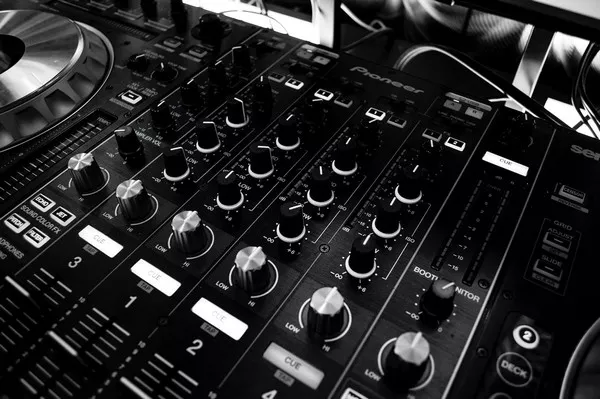Music, a universal language that transcends cultural and linguistic barriers, is a blend of art and science. It relies on the fundamental building blocks of melody and harmony, of which music scales play a pivotal role. In this comprehensive exploration, we will delve into the heart of music theory to understand the intricacies of how music scales work. Whether you are a budding musician, a curious enthusiast, or simply someone who appreciates the magic of music, this article will illuminate the essential concepts, history, and practical applications of music scales.
The Fundamentals of Music Scales
To comprehend how music scales work, we must start at the very beginning. Music scales are a series of notes that form the foundation for melodies and harmonies. These scales are constructed using specific intervals between the notes, which create a distinct pattern of tones and semitones. The intervals between the notes in a scale are what give it its unique character, and they determine its place within the vast landscape of music theory.
The History of Music Scales
The concept of music scales has deep historical roots, stretching back thousands of years. One of the earliest known scales is the diatonic scale, which dates back to ancient Greece. The diatonic scale consists of seven notes and forms the basis for much of Western music. Over time, various cultures around the world developed their own scales, each with its distinct character and emotional resonance.
In the Western world, the most common scales are the major and minor scales. The major scale is known for its bright and happy sound, while the minor scale is often associated with a sadder, more melancholic tone. These two scales are the pillars of Western classical and popular music, and understanding them is essential for any musician or music enthusiast.
Anatomy of a Music Scale
Before diving deeper into how music scales work, it’s crucial to understand the anatomy of a scale. A typical scale consists of seven notes, with the eighth note being a repeat of the first, but an octave higher. These seven notes are named using letters from the alphabet, A through G. The distance between these notes determines the scale’s unique sound and character.
The intervals between the notes are measured in whole steps (W) and half steps (H). A whole step is equivalent to two half steps, so a step-wise movement within a scale can be thought of as a combination of one whole step and one half step.
In the context of a major scale, the pattern of whole and half steps is as follows: W-W-H-W-W-W-H. For example, in the key of C major, the notes are C-D-E-F-G-A-B-C. This pattern, consistent for any major scale, is the foundation for the bright and joyful sound associated with major scales.
Conversely, a natural minor scale has a different pattern of whole and half steps: W-H-W-W-H-W-W. In the key of A minor, the notes are A-B-C-D-E-F-G-A. This pattern imparts the melancholic, introspective quality that is characteristic of minor scales.
Types of Music Scales
Music scales come in a variety of types, each with its own unique character. While the major and natural minor scales are the most common in Western music, there are numerous other scales that have been employed in various musical traditions. Here are some examples:
Harmonic Minor Scale: The harmonic minor scale is a variation of the natural minor scale. It is characterized by its raised seventh degree, which creates a unique and exotic sound. This scale is often used in classical, jazz, and world music to add tension and color to compositions.
Melodic Minor Scale: The melodic minor scale is yet another variation of the natural minor scale. In this scale, both the sixth and seventh degrees are raised when ascending, creating a bright and ascending sound. When descending, it reverts to the natural minor scale pattern.
Pentatonic Scales: Pentatonic scales have only five notes per octave, making them simpler than heptatonic (seven-note) scales like the major and minor scales. They are prevalent in various musical traditions, including blues, rock, and Asian music. The most common pentatonic scales are the major and minor pentatonic scales.
Blues Scale: The blues scale is a variation of the pentatonic scale and is prevalent in blues and jazz music. It includes both the major and minor thirds, as well as the diminished fifth, creating the distinctive “blue” notes that characterize these genres.
Whole-Tone Scale: The whole-tone scale consists entirely of whole steps and is characterized by its lack of a leading tone. This scale creates a sense of instability and is often used to convey a dreamlike or mysterious quality in music.
Chromatic Scale: The chromatic scale includes all twelve possible pitches in an octave. It is highly dissonant and is often used for special effects or brief transitions in music.
Exotic Scales: Various musical traditions around the world feature unique scales that are not commonly found in Western music. For example, the Indian raga system and Middle Eastern maqam system use scales with intricate microtonal intervals, resulting in rich and evocative melodies.
Understanding these different types of scales is essential for musicians looking to expand their repertoire and experiment with diverse musical styles.
Building and Transposing Scales
Now that we’ve explored the various types of scales, it’s time to delve into how scales are constructed and how they can be transposed into different keys. Understanding this process is crucial for musicians when composing, improvising, or arranging music.
To construct a scale in a particular key, you start with a note and apply the pattern of whole and half steps specific to the desired scale type. For example, to create a C major scale, you would start with the note C and follow the W-W-H-W-W-W-H pattern, resulting in the notes C-D-E-F-G-A-B-C.
Transposing a scale means shifting it to a different key while maintaining the same pattern of intervals. For example, if you wanted to play a G major scale, you would start with the note G and apply the W-W-H-W-W-W-H pattern, giving you the notes G-A-B-C-D-E-F#-G. Transposition is a fundamental skill for musicians, as it allows them to adapt a piece of music to suit their vocal or instrumental range, or to achieve a particular emotional or tonal quality.
The Circle of Fifths
One of the most valuable tools for understanding how music scales work and for transposing scales is the Circle of Fifths. The Circle of Fifths is a visual representation of the relationships between the twelve different key signatures. It helps musicians easily determine the key and the notes in any major or natural minor scale.
The Circle of Fifths is organized in a circular fashion, with each key signature located at an equal distance from the next. Moving clockwise around the circle, you ascend by perfect fifths (seven half steps), while moving counterclockwise, you descend by perfect fifths. This relationship allows you to determine the sharps or flats in a key signature as you travel around the circle.
For example, if you start at the top of the circle with the key of C major (which has no sharps or flats), and you move clockwise one step, you arrive at the key of G major (with one sharp, F#). Move another step, and you’re in D major (with two sharps, F# and C#), and so on. Conversely, moving counterclockwise around the circle takes you through the keys with increasing flats.
The Circle of Fifths is an invaluable tool for musicians as it simplifies the process of understanding key signatures, transposing music, and identifying the relationships between different scales.
Modes: A Deeper Exploration of Scales
In addition to the standard major and minor scales, there are musical modes, which offer even more possibilities for composition and improvisation. Modes are based on the same seven-note structure as scales but start on different degrees of the scale, creating unique patterns of intervals. Each mode has its distinct character, and they are often used to evoke specific moods in music.
The modes derived from the major scale are as follows:
Ionian Mode: This is the standard major scale, with the same pattern as W-W-H-W-W-W-H.
Dorian Mode: The Dorian mode has a pattern of W-H-W-W-W-H-W, starting on the second degree of the major scale. It has a somewhat jazzy and bluesy sound.
Phrygian Mode: The Phrygian mode starts on the third degree of the major scale and follows the pattern H-W-W-W-H-W-W. It has a mysterious and exotic quality.
Lydian Mode: Starting on the fourth degree of the major scale, the Lydian mode has a pattern of W-W-W-H-W-W-H. It creates a dreamy and ethereal atmosphere.
Mixolydian Mode: The Mixolydian mode begins on the fifth degree of the major scale and follows the pattern W-W-H-W-W-H-W. It is often used in rock and blues music.
Aeolian Mode: The Aeolian mode is the natural minor scale, with a pattern of W-H-W-W-H-W-W, starting on the sixth degree of the major scale. It conveys a sense of melancholy.
Locrian Mode: The Locrian mode starts on the seventh degree of the major scale and has the pattern H-W-W-H-W-W-W. It is the darkest and most dissonant of the modes.
Understanding these modes and how they relate to the major scale is crucial for musicians looking to experiment with different tonal colors and evoke specific emotions in their compositions.
Practical Applications of Music Scales
Now that we have a solid grasp of how music scales work and their various types and modes, it’s time to explore their practical applications in the world of music. Scales are not just theoretical constructs; they serve as the foundation for melody, harmony, and composition in a wide range of musical genres.
Melodies and Solos
One of the most direct applications of scales in music is in crafting melodies and solos. Melodies are the heart of a song, and scales provide the notes from which these melodies are created. When a composer or musician wants to create a memorable tune, they often turn to scales to form the melodic structure.
For example, in a piece of music in the key of C major, the composer can use the notes of the C major scale to form a catchy and harmonious melody. The same principle applies to improvisation in genres like jazz or blues, where musicians use scales as a basis for their solos.
Harmonies and Chords
Scales also play a vital role in harmonies and chords, which are essential components of music. Chords are built by stacking the notes of a scale, typically in thirds. In a major scale, for instance, you can create a C major chord by taking the first, third, and fifth notes of the scale (C-E-G). This is known as a triad, and it’s the foundation of chord progressions in countless songs.
Understanding scales and their relationships is crucial for building harmonious chord progressions. Musicians can use the notes of a scale to construct chords that complement the melody and create a balanced and pleasing harmonic structure.
Modulation and Key Changes
Scales also come into play when musicians want to change the key of a song, a technique known as modulation. Modulation can introduce new tonal colors, create tension, or convey a sense of progression in a composition. To modulate to a new key, musicians often choose a scale that shares some common notes with the current key. This makes the transition smoother and more musically satisfying.
For example, if a song is in the key of C major and the musician wants to modulate to G major, they can use the notes of the C major scale (C-D-E-F-G-A-B) to transition smoothly into the G major scale (G-A-B-C-D-E-F#). By sharing common notes (C and D), the transition sounds more natural and harmonically pleasing.
Scales in Different Genres
The practical applications of scales extend across a broad spectrum of musical genres. While major and minor scales are prevalent in Western classical and popular music, other scales and modes are used in various contexts:
Jazz: Jazz musicians often explore modes like Dorian, Mixolydian, and the diminished scale to create complex harmonies and improvisational solos.
Blues: The blues scale, with its characteristic blue notes, is a cornerstone of blues music, adding a raw and emotional quality to the genre.
Rock: Rock guitarists frequently use the minor pentatonic scale to create iconic guitar solos, while rock progressions often involve power chords, derived from the major scale.
Indian Classical Music: The raga system in Indian classical music employs a wide array of scales and modes, allowing for intricate and expressive melodic exploration.
Middle Eastern Music: Maqamat, the scales used in Middle Eastern music, are characterized by microtonal intervals and are central to the emotive and ornate melodies of the region.
Understanding the scales and modes relevant to a particular genre is crucial for musicians seeking to master their craft and contribute to the distinctive qualities of that style.
Conclusion: The Beauty of Musical Scales
Music scales are the foundational building blocks of music, connecting theory to practice and providing a framework for the creation of beautiful melodies and harmonies. By understanding how music scales work, musicians can unlock the secrets of composition, improvisation, and modulation, and can explore a vast array of musical possibilities.
From the ancient Greeks to contemporary musicians, the concept of scales has transcended time and culture, providing a universal language that unites people through the power of music. Whether you’re a composer, a performer, or simply an avid listener, the knowledge of music scales enhances your appreciation of the art form, allowing you to discern the intricate patterns and emotional nuances that lie within each musical composition. As you continue your journey through the world of music, remember that scales are your trusted companions, guiding you through the vast and enchanting landscape of sound.



























